How to Check Hard Drive Health in Windows [Six Working Solutions]
The hard drive is the most important place to store data in your computer, and it cannot be replaced like other software or hardware. Its lifespan will continue to shorten during constant reading and writing.
So, it's crucial that you maintain a close eye on hard drive health in Windows 11 and Windows 10 to prevent any unforeseen crashes and the subsequent data loss they would cause. We have attempted to cover the precise methods to check hard drive health in this text. Let's start straight now.
When Do We Need to Check Hard Drive Health on Windows 11/10
Given that you cannot predict how long your hard disk will last, it is critical to remain alert for any indications of trouble. The following are some signs you should be careful of to check if a disk is healthy and avoid corrupted hard drives:
Physical Hard Drive Failure Symptoms:
- Overheating
- Sharp screeching or clicking sounds
- Slow boot or slow processes
Logical Hard Drive Failure Symptom:
- Blue screen of death appears
- Frequent system crashes
- Files/folders disappearing
- Operating system is unable to boot
- Longer file load times in File Explorer
You can avoid data loss and hassle if you can identify the problem with your HDD before it happens. If you believe your hardware is nearing the end of its useful life, you can also prepare by purchasing a new storage drive.
How to Check Hard Drive Health on Windows 11/10
There are different ways to check for physical and logical hard drive damage. Let's look at how to check hard drive health physically or logically.
#1. Via Qiling Disk Master
Qiling Disk Master is an all-in-one disk partitioning software for all Windows systems. It offers the "Disk Health" feature to check different properties of the hard drive, such as free space, health, temperature, performance, etc.
This tool simplifies the process of Windows built-in tools so that even a computer novice can master computer skills like a technical expert. Check out the steps below to check the health of your disk.
Step 1. Launch Qiling Disk Master and click the blue arrow to activate the "Disk Health" feature under the "Tools and utilities" page.
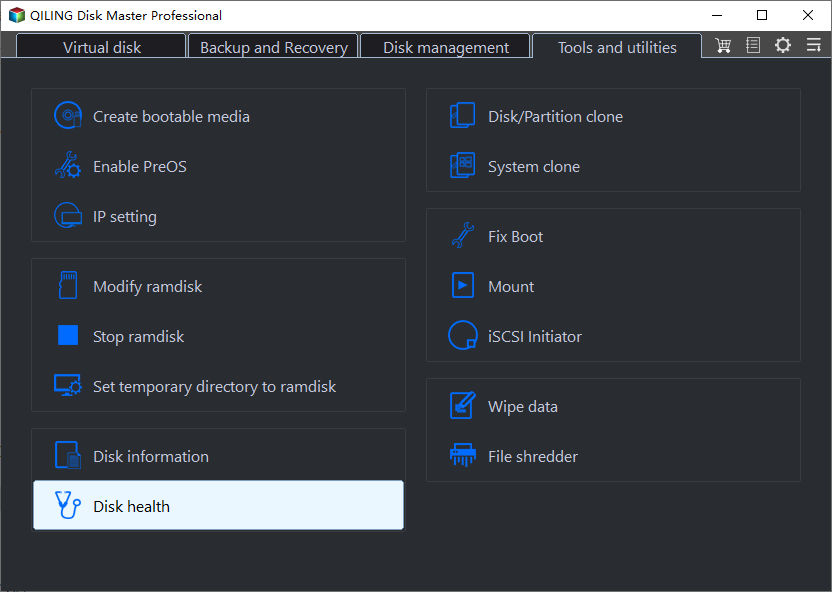
Step 2. Select the target disk and click the "Refresh" button. Then, you can see the health condition of your disk.

In addition, the tool can perform a disk surface test to check for corrupted file systems or bad sectors and repair them. Feel free to share this professional and easy method to help more of your friends monitoring disk health on their own:
You may also like:
#2. Via CMD
Windows provides command line tools to check hard drive health and provide simple conclusions such as "OK," "Pred Fail," etc. Performing a hard disk health check can be done quickly using WMIC (Windows Management Instrumentation).
Follow the steps to check hard drive health via CMD:
- Click Windows + R to open the Run window and type cmd.
- Type "wmic" and press Enter.
- Type "wmic diskdrive get status," and press Enter to view the disk health status.
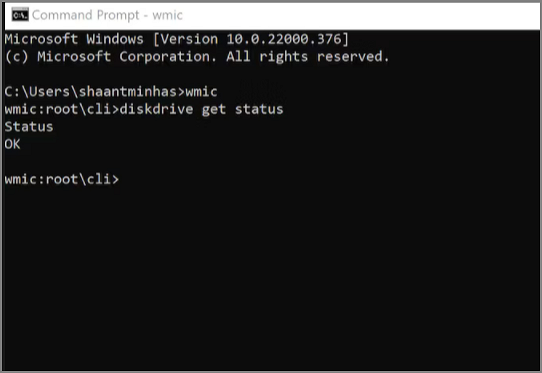
If you receive "OK," the drive is in good condition. If you receive "bad," "unknown," or "caution," the disk drive is faulty, and you should use Qiling Disk Master to repair it.
#3. Via CHKDSK
CHKDSK is an abbreviation for check disk. This command is another method provided by Windows to check the operational status of the disk. This tool checks the integrity of the file system and fixes its logical errors.
- Open a Run window and type cmd.
- Type "CHKDSK" in the Command Prompt window and Enter. It will run a basic scan.
- If you want to repair errors on your hard drive, use the chkdsk/f/r command.

To get more details about hard drives, click the link below to learn.
What Laptop Hard Drive Size Should I Use [2023 Explanation]
What size of a hard drive do I need to choose for my laptop? 2.5 inch. The 2.5-inch hard drive is typically designed for laptops, while the 3.5-inch is for desktops.
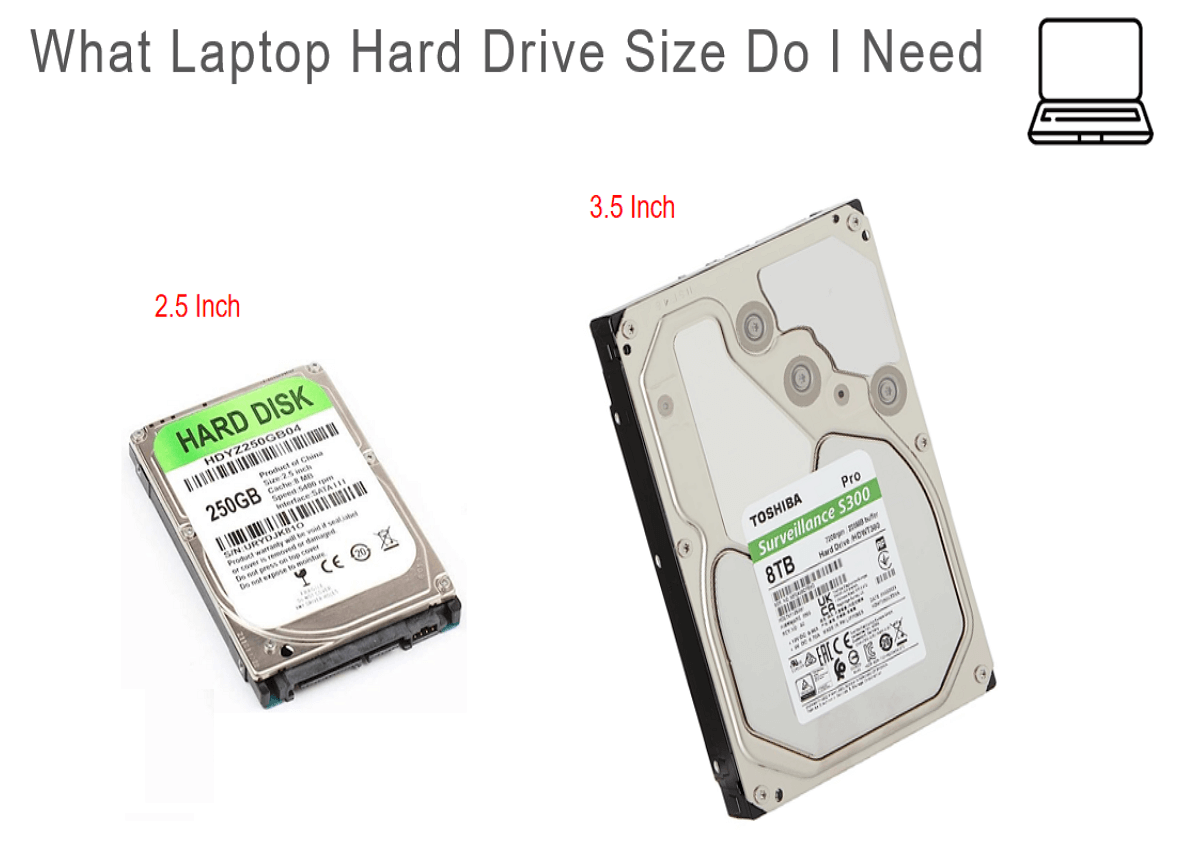
#4. Via Defrag and Optimize
The disk defragmenter provided by Windows can detect the fragmentation level on your hard disk and help reorganize fragmented data. Using this tool will enhance disk health and improve overall computer performance. To complete defragmentation, follow these steps:
Step 1. Click on the search box, type "defrag," and select "Defragment and Optimize Driver."

Step 2. Select your hard drive and click "Optimize" to start the defragmentation.
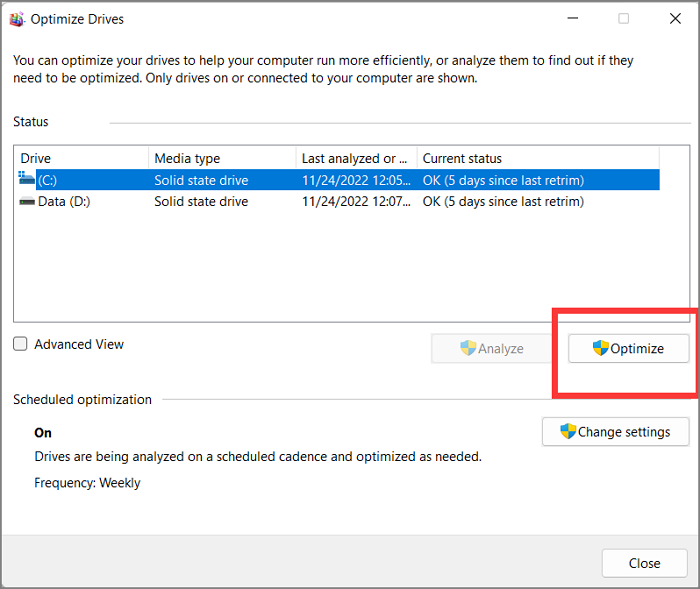
- Notice:
- If you are using an SSD, defragmentation is not necessary. Otherwise, it may cause wear and tear on the hardware and shorten its life.
Video Tutorial of Checking Hard Drive Health
This video shows you the comprehensive methods provided on this page to viewing hard drive health from different angels, follow and to learn more about the details if you need a more clear guide:
#5. Via HDD Manufacturer's Tools
Most hard drive manufacturers offer free tools to check the health and performance of hard drives, such as Western Digital, Samsung, and Seagate all offer diagnostic tools. If you do not know the manufacturer of your hard drive, you can check it in Device Manager:
Step 1. Right-click on the Windows icon and select "Device Manager."

Step 2. Click on "Disk Drives" to view the list of storage devices.
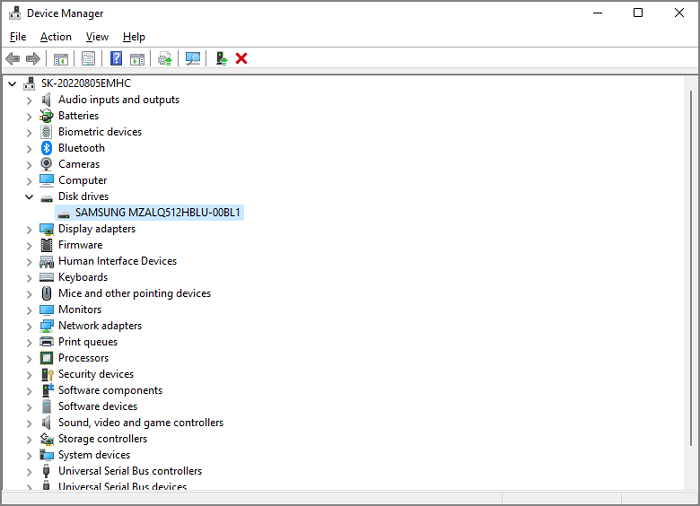
Step 3. Copy the drive model number to Google search to see the manufacturer's name.
Step 4. Download and install the manufacturer's tool to analyze the drive's status.
Download page for some well-known hard drive brands:
#6. Check Hard Drive Health Physically
It is the fastest and simplest way to check hard drive health. You should safely open your computer case and follow the steps to check its health status:
Step 1. Check connections: Ensure that the cables are securely linked and connected correctly.
Step 2. Clear dust and debris: The dust from the case and hard drive should be safely blown away with a can of pressurized air.
Step 3. Look for physical damage: Check the possible exterior damage and listen for weird noises.
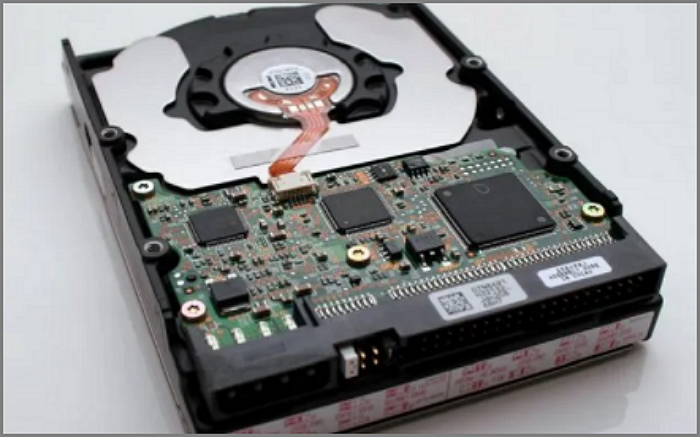
If your hard drive is physically damaged, you may need to replace it with a new one. If your hard drive is not physically damaged, you can perform a logical check by following the methods above.
Now, we have finished learning the six ways to check hard drive health. Here are some other topics related to hard drive. You can click the button to learn more:
Conclusion
Hard drives are necessary storage devices that may cause more damage if not checked in time. This article helps you analyze when you should perform a disk check. For example, when you encounter strange noises, when your hard drive starts to heat up, or when you receive frequent error messages, it is time for you to actively track the hard drive's health.
This article provides five effective ways to check hard drive health on Windows 11/10. One of them, Qiling Disk Master, is the easiest. As a powerful tool related to disk partition, it not only checks hard drive health but also provides the ability to repair corrupted file systems and bad sectors if they exist.
Moreover, you can also apply this tool to: Tell if a Hard Drive Is Bad, Tell if a Hard Drive is New or Used, etc.
FAQs Of Checking Hard Drive Health
Let's take a look at some other frequently asked questions related to checking the health of your hard drive:
1. How do you check if an HDD is dying?
If any of these signs are present, your HDD is having problems, and its life may be affected:
- The hard drive is constantly noisy and hot
- Slow boot and processing speeds
- Many bad sectors on the hard drive
- Data is lost, and files cannot be opened
- Frequent blue or black screens on your computer
2. What is the best program to check HDD health?
Qiling Disk Master is one of the best tools to check HDD health. It can also repair bad sectors and corrupted file systems. Alternatively, you can use the command line tool that comes with Windows, CHKDSK also provides very powerful functions, but you need to avoid parameter errors when entering commands.
3. How can I test the health of my hard drive?
You can either download Qiling Disk Master and test the health of your hard drive or use the command line tool with Windows.
Step 1. Hold down Windows + R to open the Run window and type cmd.
Step 2. Type CHKDSK and press Enter.
Related Articles
- How to Format New SSD in Windows 10/11 [100% Working Solutions]
- How to Install Windows 11 on Windows 7 [Get In-depth Guide]
- How to Use DiskPart to Merge Partitions
- Download Partition Magic Server Software for Windows Server 2012/2012 R2